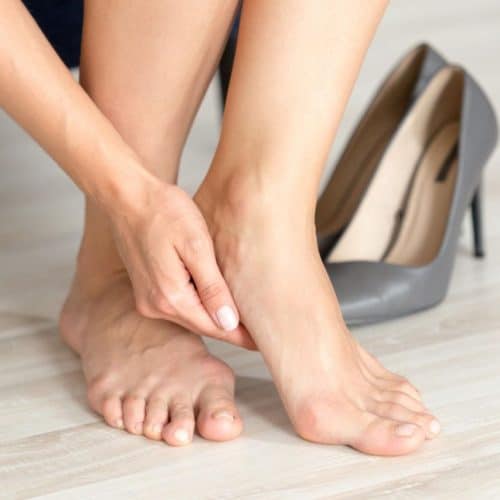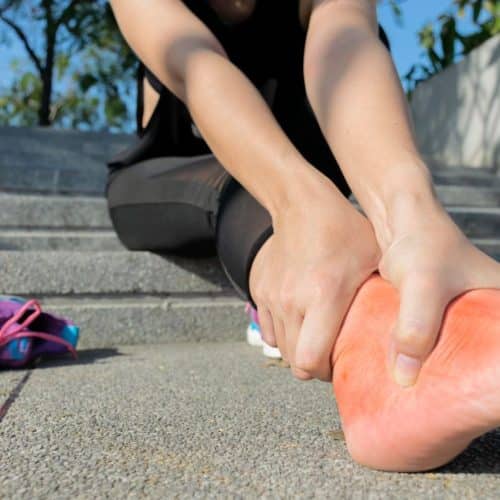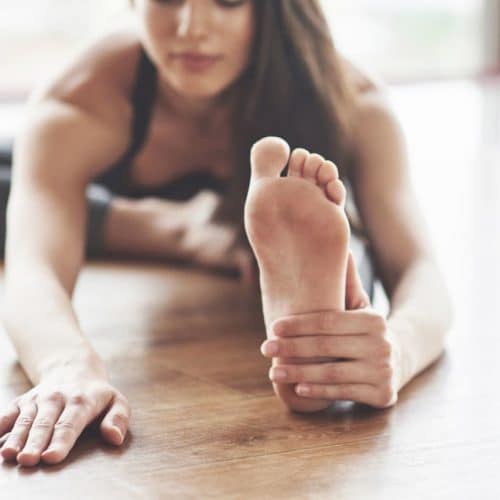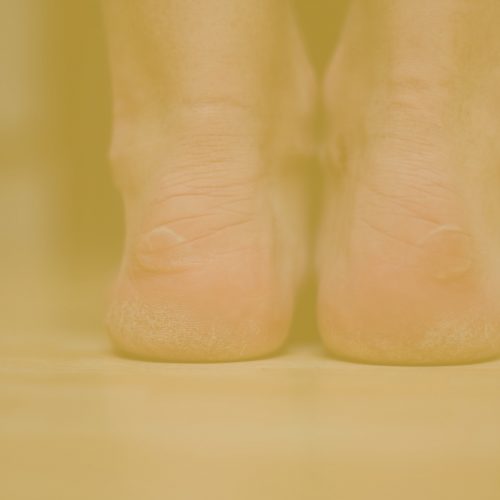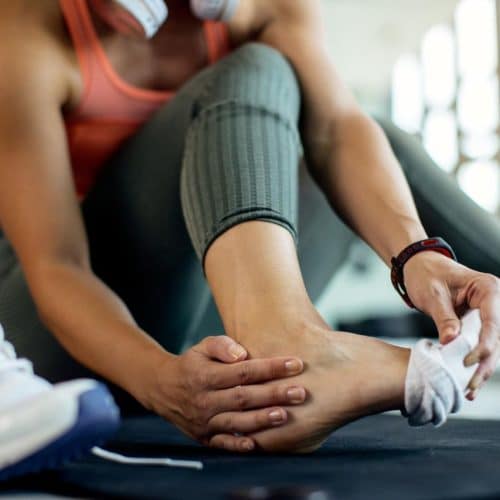A common foot problem that podiatrists see on a daily basis is heel pain, which is also sometimes referred to as plantar heel pain. The length of time that this pain lasts and how severe it is might vary quite a bit from person to person. But what really triggers it, and what are some of the most successful management strategies?
How Long Does Heel Pain Last?
Podiatrists frequently get asked about the duration of heel pain. Typically, plantar heel pain can last anywhere from three to 12 months. This wide range is influenced by several factors:
- Severity of the Condition: Not all heel pains are the same. Some individuals might experience a mild discomfort, while others could suffer from intense pain. The severity often dictates the duration.
- Treatment Choices: The type of treatment chosen by the patient can influence the duration of the pain. Some treatments offer quicker relief than others.
- Compliance Factors: How well a patient adheres to the recommended treatment and advice can also play a role in the pain’s duration.
- Individual Responses: Everyone’s body is different. Some might find instant relief with a particular treatment, while others might need to explore alternative options.
What Causes Heel Pain?
Pain in the heel is a symptom and not a condition in and of itself. Gaining an understanding of the underlying reasons can assist in the efficient treatment of it. There are a variety of causes and conditions that might lead to heel discomfort, including the following:
- Plantar Fasciitis: One of the most common causes of heel pain, plantar fasciitis, involves the inflammation of the plantar fascia. This thick band of tissue runs across the bottom of your foot, connecting your heel bone to your toes. Overuse, wearing non-supportive footwear, or being overweight can strain the plantar fascia, leading to pain and stiffness.
- Heel Spurs: These are calcium deposits that cause a bony protrusion on the underside of the heel bone. While heel spurs may not always cause pain, they can lead to plantar fasciitis.
- Achilles Tendinitis: This condition is an overuse injury of the Achilles tendon, which connects the calf muscles at the back of the lower leg to the heel bone. Continuous stress on the Achilles tendon due to activities like running or jumping can cause inflammation and pain at the back of the heel.
- Bursitis: The heel has a protective bursa sac, filled with lubricating fluid, that reduces friction between tissues. Inflammation of this bursa, often due to repetitive motion or pressure, can result in pain at the back of the heel.
- Tarsal Tunnel Syndrome: This condition is caused by the compression of a large nerve in the back of the foot. Symptoms can include pain, numbness, or a burning sensation in the heel.
- Stress Fractures: These are tiny breaks in the heel bone, often caused by repetitive stress, like from high-impact sports or heavy manual work.
- Rheumatoid Arthritis: This autoimmune disease can cause inflammation in joints, including the heel, leading to pain and discomfort.
- Gout: A type of arthritis caused by the buildup of uric acid crystals in joints can lead to sudden and severe pain in the heel.
- Other Causes: Conditions like heel pad syndrome (thinning of the heel pad), Sever’s disease (common in children and adolescents), and certain systemic diseases like lupus can also contribute to heel pain.
It’s essential to remember that heel pain can be a result of a combination of factors. Proper diagnosis by a healthcare professional, preferably a podiatrist, is crucial to determine the exact cause and appropriate treatment.
Treatment Options for Heel Pain
Heel pain can be both inconvenient and debilitating, but a variety of treatments are available to address its root causes and alleviate discomfort:
- Physical Therapy: A trained physical therapist can guide patients through exercises that stretch and strengthen the muscles in the foot, improving flexibility and reducing strain on the heel. They may also use techniques like ultrasound therapy or deep tissue massage to promote healing.
- Orthotics: Custom shoe inserts, designed specifically for an individual’s foot structure, can provide additional support, distribute pressure more evenly, and cushion the heel. Over-the-counter insoles can also offer temporary relief for some people.
- Medications: Over-the-counter pain relievers like ibuprofen or naproxen can reduce pain and inflammation. In more severe cases, a doctor might prescribe stronger pain relievers or corticosteroid injections to reduce inflammation.
- Rest and Ice: Sometimes, the best treatment is to give the foot a break. Resting and applying ice can reduce inflammation and speed up the healing process.
- Night Splints: These devices keep the foot in a dorsiflexed position overnight, stretching the plantar fascia and Achilles tendon, which can help alleviate morning pain.
- Shock Wave Therapy: This non-invasive procedure uses sound waves to stimulate healing in the heel area. It’s particularly useful for chronic cases of heel pain that haven’t responded to other treatments.
- Surgery: In rare cases where other treatments don’t provide relief, surgery might be considered. Procedures can involve releasing the plantar fascia, removing a heel spur, or addressing other underlying issues.
- Alternative Therapies:
- Acupuncture: This traditional Chinese medicine technique involves inserting thin needles into specific points on the body, which can help alleviate pain.
- Magnetic Field Therapy: Some believe that magnetic fields can stimulate healing and reduce pain, though more research is needed.
- Extracorporeal Pulse Activation Treatment (EPAT): A non-invasive treatment that uses pressure waves to stimulate metabolism, enhance blood circulation, and accelerate healing.
- Lifestyle Changes: Maintaining a healthy weight, choosing supportive footwear, and avoiding prolonged standing or walking on hard surfaces can prevent or reduce heel pain.
It’s essential to consult with a podiatrist to determine the most appropriate treatment for heel pain. They can provide a comprehensive evaluation and recommend a tailored treatment plan based on the specific cause and severity of the pain.
Rehabilitation for Heel Pain
Rehabilitation for heel pain is a multifaceted approach that aims to restore function, alleviate discomfort, and prevent future injuries. Initially, the focus is on reducing inflammation and pain. This can be achieved through rest, ice applications, and anti-inflammatory medications. Physical therapy becomes a cornerstone of rehabilitation as the acute phase of pain subsides. A trained physical therapist can guide patients through exercises designed to stretch and strengthen the muscles in the foot, enhancing flexibility and reducing strain on the heel.
Orthotic devices, which are custom-made shoe inserts, play a pivotal role in the rehabilitation process. Designed specifically for an individual’s foot structure, they offer support, distribute pressure more evenly, and cushion the heel, providing an environment conducive to healing. Night splints are another therapeutic tool used in rehabilitation. Keeping the foot in a specific position overnight helps stretch the plantar fascia and Achilles tendon, addressing the stiffness and discomfort many patients experience upon waking.
Advanced therapies like shock wave therapy or Extracorporeal Pulse Activation Treatment (EPAT) can be explored for those with chronic heel pain that doesn’t respond to conventional treatments. These non-invasive procedures use waves to stimulate healing in the heel area, promoting faster recovery. In rare instances where conservative treatments don’t yield the desired results, surgery might be considered a last resort to address the underlying issue causing the pain.
Throughout the rehabilitation process, lifestyle modifications can significantly aid recovery. Maintaining a healthy weight, choosing supportive footwear, and avoiding prolonged activities that put undue stress on the heel is crucial. Incorporating regular foot exercises into one’s daily routine is beneficial, ensuring the foot remains strong and flexible. Regular check-ins with a healthcare professional, preferably a podiatrist, are essential to monitor progress and adjust the rehabilitation plan.
Conclusion
Heel pain can be a debilitating disease, but it is possible to properly manage this issue with the appropriate understanding and treatment strategy. It is absolutely necessary to schedule an appointment with a podiatrist in order to obtain a personalised treatment plan and to gain insight into the underlying cause of the discomfort. Keep in mind that everyone has a unique physical makeup, and hence, what works for one person cannot work for another. Discovering what works best for you is the most important thing.



